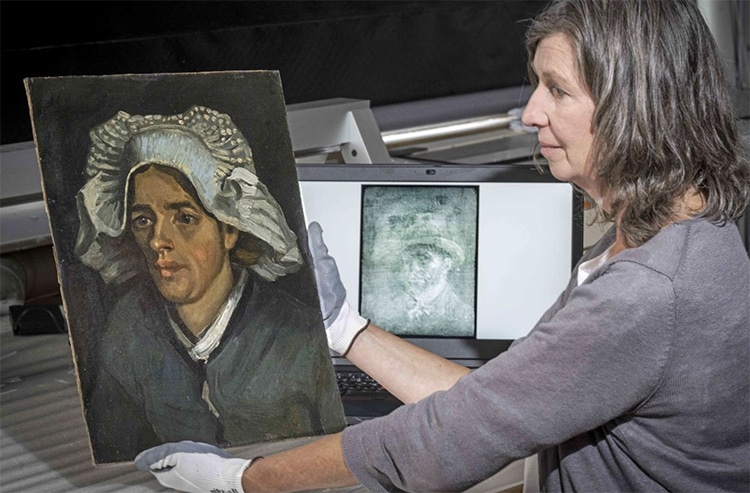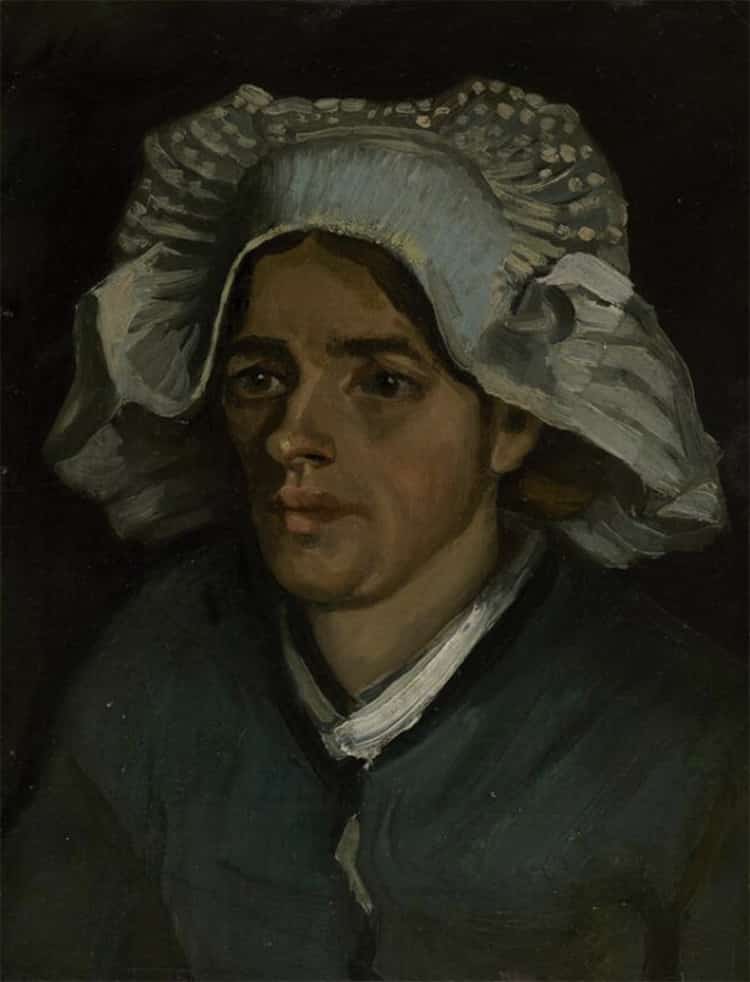Senior Conservator Lesley Stevenson views the painting alongside an x-ray image of the hiddenVan Goghself-portrait.
X-ray is used to examine what lies beneath layers and frames.
People are fascinated with the artist who eventually came to cut off his own ear.

Senior Conservator Lesley Stevenson views the painting alongside an x-ray image of the hiddenVan Goghself-portrait.(Photo:Neil Hanna /National Galleries Scotland)
Among the over 2,100 artworks he created was a simple portrait of a peasant woman.
When X-rayed, an image of the artistcomplete with hat, kerchief, and earappeared.
Van Gogh was known to reuse canvases by turning them over and painting on the reverse side.

The x-ray showing the self-portrait. (Photo:National Galleries Scotland)
At the time, his work was becoming more colorful and expressive.
Several other self-portraits painted on the reverse of other works date to the period.
The self-portrait was probably covered by layers of glued cardboard in the early 20th century.

Head of a Peasant Woman, by Vincent Van Gogh, 1885. (Photo:National Galleries Scotland)
Conservators at the National Galleries Scotland discovered a hidden self-portrait by Vincent Van Gogh.
The x-ray showing the self-portrait.
Head of a Peasant Woman, by Vincent Van Gogh, 1885.
(Photo:National Galleries Scotland)